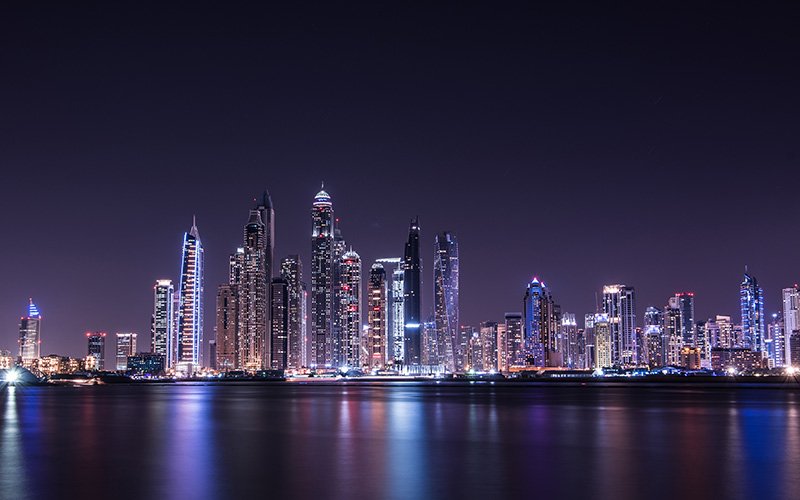If you’re a photography enthusiast, beginner, or a seasoned professional, living in the UAE offers a unique opportunity to capture the stunning urban landscapes that come alive at night. The dazzling array of city lights creates an irresistible maze of colors waiting to be photographed. If you haven’t explored night photography in the UAE yet, here’s a guide to help you make the most of it.
Choosing the Right Spot:
One of the key aspects of night photography is finding the perfect location. Don't be discouraged if many photographers have already captured the place you have in mind. Every photographer brings their unique perspective to the scene, so find a spot that resonates with you and go for it.
Checking Weather Conditions:
Before you head out, check the weather conditions. Factors like haze, wind, or dust storms can significantly impact your shots. Plan ahead and dress accordingly to ensure a comfortable and successful photography session.
Exploring Different Angles:
Even if you've found an ideal spot, don't limit yourself to a single vantage point. Experiment by moving around, walking a bit up or down the street, or to the sides. Changing your viewpoint can lead to entirely different compositions and captivating images.
Timing Matters:
Arrive at your chosen location before sunset to take advantage of the "blue hour" and continue shooting into the darker evening. The changing light throughout this period can yield a variety of captivating images from the same spot.
Stability with a Tripod:
Using a steady tripod is crucial for night photography. Ensure it's placed on a stable surface to minimize vibrations. If you're on a bridge or wooden floor, be mindful of passing cars and people, as their movements can affect your shot. Look for a quieter vantage point if possible.
Remote Shutter Release:
For the sharpest results, consider using a remote shutter release. If you don't have one, your camera's timer function can also help reduce camera shake caused by manually pressing the shutter release button. A wired remote is preferable, especially when shooting in bulb mode for exposures longer than 30 seconds.
Choosing the Right Lens:
Opt for a wide-angle lens or use the widest lens in your collection. If necessary, capture a panorama and later stitch the images together in software like Photoshop or Lightroom. Aim for an aperture setting between f/8 and f/11, as these typically provide the best results for landscape photography. However, test your lenses to determine their sharpest f-stop range. Don't forget to use a lens hood if available, and turn off vibration reduction or optical stabilization if your lens has these features.
Shooting in RAW:
Always shoot in RAW mode to capture the most data and retain flexibility during post-processing.
Exposure and Histogram:
When shooting in RAW, consider slightly overexposing your shots. Use your camera's histogram as a reference, ensuring it doesn't clip on the left (losing detail in shadows) and slightly clips on the right (capturing raw data for post-processing). This approach is particularly valuable for night scenes with extreme contrasts.
ISO Settings:
Explore your camera's extended ISO options if available. While it may reduce dynamic range in highlights slightly, it can enhance shadow details, especially when slightly overexposing your shots.
Avoid Overdoing HDR:
Unless you specifically aim for an HDR effect, keep your captured image closer to the actual scene to maintain a natural and realistic look.
White Balance:
In RAW mode, you can leave the white balance setting on Auto, as it can be easily adjusted during post-processing.
Achieving Sharp Focus:
For precise focus, switch your camera to Live View mode and use the zoom function to magnify your subject. Focus manually or automatically, then switch to manual mode (if needed) and turn off Live View before taking the shot. Review the image at full zoom to ensure sharpness.
Carry Spare Batteries:
Using Live View and reviewing images can drain your camera's battery faster. Always have spare batteries on hand to avoid any interruptions during your photography session.
Take a Moment to Enjoy:
Lastly, don't forget to take some time for yourself and savor the breathtaking view. Switch off your camera, find a quiet spot, and immerse yourself in the beauty of the night.
These tips are based on personal experiences and can help you make the most of your night photography adventures in the UAE.
